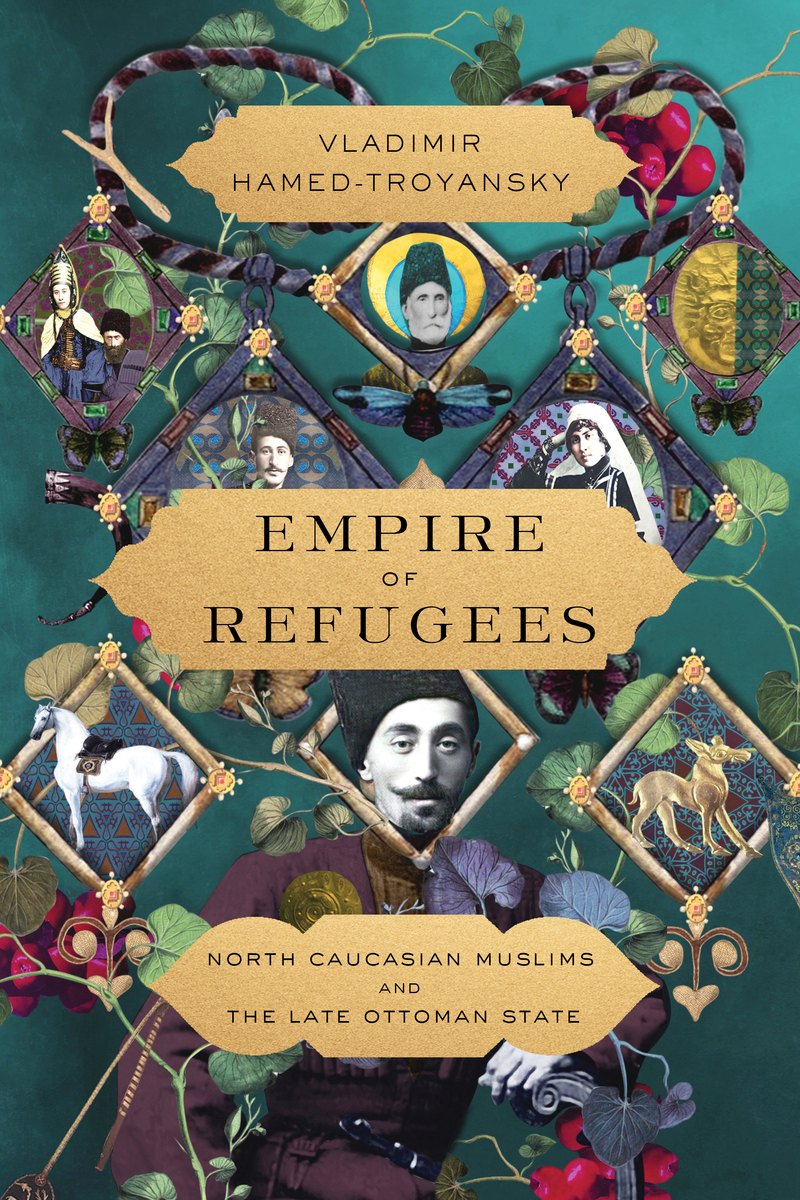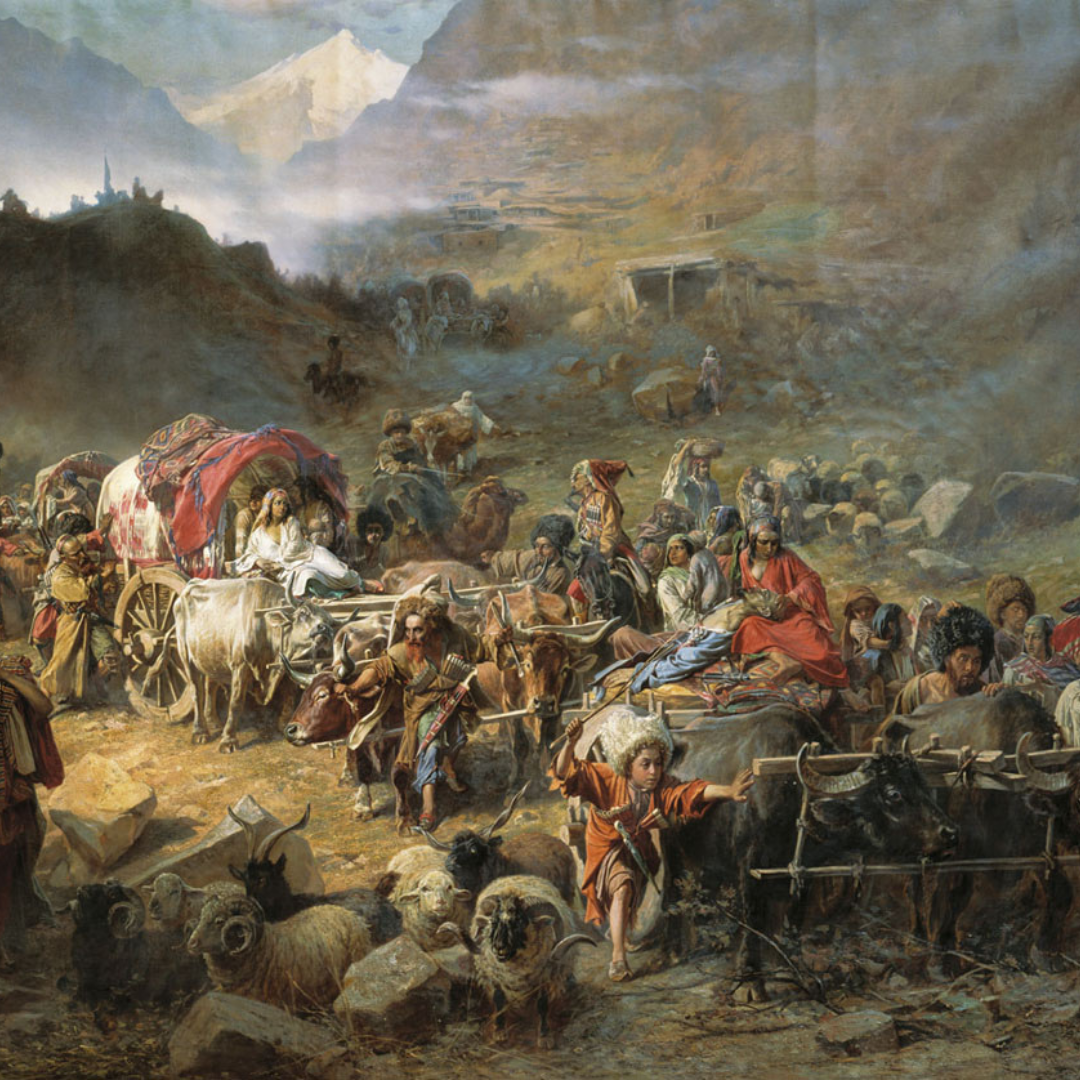Muhajirs in the Late Ottoman Empire

Published by: Stanford University Press

Whoever indulges in the questionable activity of reading nineteenth-century novels that deal with Orientalist themes will encounter the figure of the Circassian. British and French authors depicted male Circassians as resolute fighters, while their female counterparts were supposedly the most beautiful odalisques of the Ottoman Empire. Stumbling upon the repeated mentioning of this common trope, I wondered during my research whom these fictionalized stereotypes ought to represent. Who were the real Circassians? Vladimir Hamed-Troyansky’s book Empire of Refugees provided me with an answer and much more than I could have hoped for.
Empire of Refugees tells the story of migration movements caused by the Russian conquest of the Caucasus during the second half of the nineteenth century. Hamed-Troyansky describes how Circassians and other Muslim ethnicities were coerced to flee Russian aggression in the 1860s. Rightfully, the author defines the empire’s policy, aiming at the destruction of the existing social order in situ and the resettlement of its population, as a genocide. To forestall inaccurate generalizations but, simultaneously, obtain an overarching term to designate the various ethnic identities of the region, Hamed-Troyansky refers to the protagonists of his story as North Caucasians. Furthermore, he calls them muhajirs, a name chosen by the migrating people themselves. Other terms, such as refugee, emigrant, or immigrant, would only reflect a part of the complexity of the muhajirs’ lives and their self-understanding.
At times, Empire of Refugees resembles a success story of heroes who managed to rebuild their lives after fleeing war and genocide.
The book’s protagonists are from the most different social backgrounds. They were aristocrats, farmers, merchants, mothers, and warriors. After their migration, they would also become Ottoman bureaucrats, city founders, Anatolian horse breeders, revolutionary politicians, and soldiers. At times, Empire of Refugees resembles a success story of heroes who managed to rebuild their lives after fleeing war and genocide. The book, however, also provides an impression of the gruesome destiny that awaited many muhajirs, reaching from poverty to slavery, repeated resettlement, desperate attempts to return home, and even death. Hamed-Troyansky opts for a narrative that circumvents classic plotlines and portrays the migrants’ experience in a more nuanced way. His work shows the positive but also the negative, the specific but also the general, the expected but also unexpected effects that North Caucasian migration entailed.
The book follows a convincing structure that is of a chronological, geographical, as well as thematic nature. The first two chapters describe the Russian invasion of the Caucasus and an initial migration wave into Ottoman territories. This part illustrates the causes of North Caucasian movements, their unfolding, and the reaction of the Sublime Porte. Hamed-Troyansky explains how both the Russian and the Ottoman Empires tried to control the phenomenon and use it for their imperial politics. Yet, most of the time, migration would proceed without their consent or in forms different from their intent. In the second part, the author examines the various outcomes of immigration in three macro-regions of the Ottoman Empire: its European possessions, the Levant, and Anatolia. He aptly demonstrates how similar strategies in dealing with migration could erode imperial sovereignty or consolidate it. Hamed-Troyansky uses this context-related analysis to discuss migration regimes in general, while never neglecting the economic, natural, and cultural specifics. In the last part of the book, he offers an evaluation of the two possible outcomes of migration: integration into the new social environment or return to the land of origins. These chapters depict the impressive careers of North Caucasians in Ottoman politics and their blossoming network throughout the empire as well as the attempts of many to reclaim their former home now controlled by Russia.
The chosen sources visualize the publication’s constant balancing act between captivating tales and academic broader evaluations, the personal destiny of the singular muhajir and the investigation of general migration movements. Popular songs, newspapers, official documents from a broad variety of archives, letters, and interviews enrich Hamed-Troyansky’s book. The versatile selection of sources guarantees a nuanced retelling of the historical events. To impede a biased narrative, the author actively sought to include documents from farmers, destitute refugees, and even slaves, being subaltern voices usually unheard in histories of macro-developments. Empire of Refugees effectively depicts the imperial strategies of the Ottoman and Russian governments but also the economic incentives of the singular muhajir.
Hamed-Troyansky’s work should be understood as relevant for all disciplines since it deals with elementary questions of the nineteenth century and the present alike.
Hamed-Troyansky’s main success lies in his combination of imperial and migration history. This juxtaposition allows us to comprehend how Ottoman and Russian rulers sought to avail themselves of the muhajirs while the latter equally sought to instrumentalize imperial structures in order to survive. As such, the title of the book acquires a facetted meaning ingeniously implied. Empire of Refugees undermines current myths surrounding migration and the political fronts surrounding it. The book abolishes the idea of the innocent, passive refugees since it portrays their ability to function as aggressive colonialists or oppressors. Equally, it foregoes the stereotype of the noncontributory immigrant by pinpointing the North Caucasians’ role in defending, building, and leading states. As a side effect, it depicts the transimperial connections between Russia and the Sublime Porte, the transregional links between their various provinces, and the global mobility of the muhajirs. Yet, Empire of Refugees ought to be considered as valuable reading material not only by historians of said places and countries. Its appeal is exclusive neither to scholars of imperial nor migration history. On the contrary, Hamed-Troyansky’s work should be understood as relevant for all disciplines since it deals with elementary questions of the nineteenth century and the present alike.
Paul Csillag studied History and European Ethnology at the universities of Innsbruck, Jean Jaurès (Toulouse), and Yeditepe (Istanbul). He achieved a master’s degree in both fields with papers on the reception of history in pop-cultural fiction. Currently, he is working on concepts of the Mediterranean as portrayed in nineteenth-century historical novels at the European University Institute in Florence. He taught courses on Historical Fiction Studies at the Universities of Firenze, Regensburg, Salzburg, and Sciences Po (Menton).
